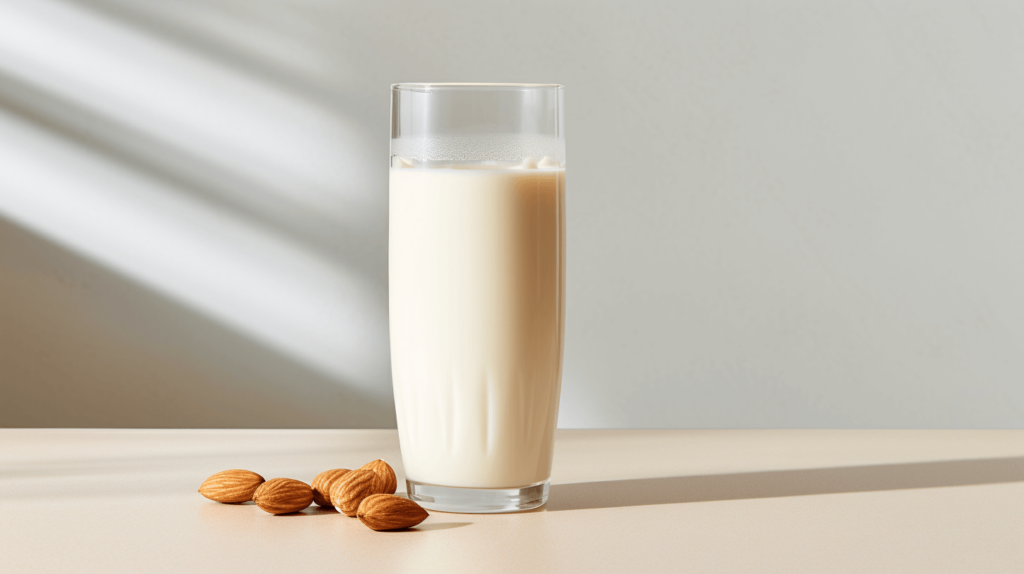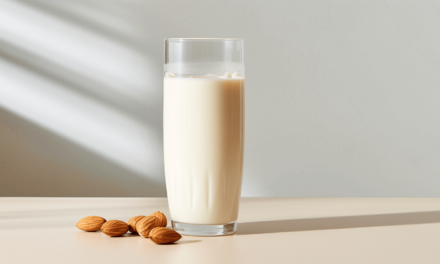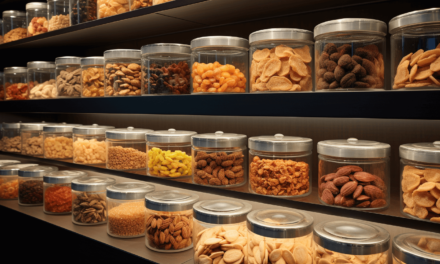Can Almond Milk Be Microwaved? This question has been on many people’s minds as
almond milk continues to gain popularity as a dairy-free alternative. This article will
delve into all the essential details regarding microwaving almond milk.
Table of Contents
What Is Almond Milk?
Almond milk, a dairy-free milk substitute, is crafted by blending almonds and water. It’s a
favored option for those dealing with lactose intolerance, dairy allergies, or embracing a
vegan lifestyle.
Can Almond Milk Be Microwaved?
Yes, you can use a microwave to heat almond milk, but it’s crucial to be mindful of some
critical factors for optimal outcomes. When done with care, microwaving almond milk
becomes a handy method for incorporating it into a wide range of beverages and
recipes, enhancing its versatility as a dairy-free option.
Factors to Consider
When using the microwave to warm almond milk, there are several important
considerations. Let’s delve into these factors more deeply to grasp why they are
significant and how they affect how almond milk reacts to being heated in the
microwave.
Composition of Almond Milk
Almond milk is made by blending water with finely ground almonds; occasionally, extra
ingredients like sweeteners, vitamins, and minerals are added. The exact composition of
almond milk is essential when considering microwaving because it affects how the milk
responds to heat.
Water Content:
Almond milk primarily consists of water, forming a substantial part of its overall
makeup. When it comes to microwaving, it’s crucial to understand that the water
molecules in almond milk play a crucial role in absorbing microwave energy and
creating heat. The higher the water content, the better heat spreads throughout the
liquid when microwaved.
When microwaving almond milk, the water molecules absorb microwave energy, leading
to gradual heating. Nevertheless, other elements, such as almonds and additional
additives, can impact how the heat is distributed within the liquid.
Nutrients and Proteins:
Almond milk often contains nutrients and proteins that contribute to its nutritional profile
and texture. These components can impact the behavior of almond milk during
microwaving.
Proteins, such as those found in almonds, can denature or change in structure when
exposed to heat. While gentle heating may not cause significant denaturation,
overheating can lead to unwanted texture changes and even curdling or separation.
Nutrients present in almond milk, such as vitamins and minerals, can also be sensitive
to heat. Prolonged or high-heat microwaving can lead to nutrient degradation,
potentially affecting the nutritional value of the milk.
Microwave Heating Process
Understanding how microwave heating works is crucial for effectively and safely
microwaving almond milk. The microwave heating process involves the interaction
between microwave energy and the water molecules present in the almond milk.
Even Heating:
Microwaves generate electromagnetic waves that cause water molecules to vibrate and
produce heat. This process produces relatively even liquid heating, as the water
molecules disperse the heat throughout the milk. As a result, almond milk heats up
gradually and uniformly.
The even heating characteristic of microwaving ensures that the entire volume of
almond milk experiences a similar increase in temperature. This feature is essential for
preventing localized overheating and maintaining the overall quality of the milk.
Potential for Uneven Heating:
While microwaving generally promotes even heating, there is a potential for uneven
heating in some instances. Uneven heating can occur due to substances like oils or fats,
which may not absorb microwave energy as efficiently as water molecules.
In almond milk, the emulsified nature of the mixture can sometimes lead to slight
variations in heating, especially if there is a higher concentration of almond particles in
a specific area. This is why stirring the almond milk during microwaving is
recommended—it helps distribute heat and prevents the formation of hotspots.
Microwave-Safe Container
When microwaving almond milk or any other food, choosing the right container is
paramount to ensure safety and optimal results. In this section, we’ll explore why
using microwave-safe containers matters and the recommended materials for
microwaving almond milk.
Importance of Using Microwave-Safe Containers
Using a microwave-safe container is crucial for several reasons. Microwave ovens emit
electromagnetic waves that generate heat by agitating water molecules in the food.
Some containers are designed to withstand these waves, while others are not. Using
containers not designed for microwaving can lead to various issues.
Safety:
Non-microwave-safe containers can melt, release harmful chemicals into the
food, or even cause fires due to their interaction with microwaves.
Leakage and Splattering:
Containers not designed for microwaving might not have
secure lids or proper seals, leading to leaks and messy splattering inside the
microwave.
Uneven Heating:
Improper containers can block or reflect microwave energy, resulting in
uneven food or liquid heating, including almond milk.
Recommended Materials
When microwaving almond milk, opt for containers made from materials that are safe
for microwave use. These materials ensure that the container itself doesn’t interact
negatively with microwaves and that the almond milk heats evenly:
Glass:
Glass containers are an excellent option for microwaving almond milk. They are
considered microwave-safe and do not release any harmful chemicals into the food.
Glass permits microwaves to pass through, ensuring even heating of the almond milk.
Moreover, glass is non-reactive so it won’t alter the taste or quality of the almond milk.
Ceramic:
Ceramic dishes and bowls are also microwave-safe options. Like glass, ceramic allows
even heating and doesn’t interact with microwaves harmfully. Make sure it has no
metallic accents when using ceramic, as metal can cause sparks in the microwave.
Microwave-Safe Plastics:
Some plastics are labeled microwave-safe and can be used to microwave almond milk.
When choosing containers to heat almond milk in the microwave, picking ones clearly
marked as safe for microwaving is wise. Nevertheless, it’s vital to exercise caution and
follow the manufacturer’s guidelines because certain plastics can emit harmful
substances when heated.
Conversely, materials such as metal, aluminum foil, and containers featuring metal
components should be steered clear in the microwave. These materials have the
potential to create sparks and lead to uneven heating, posing safety risks.
Microwaving Almond Milk
Microwaving almond milk is a convenient way to enjoy warm almond milk in various
beverages and dishes. Nonetheless, in order to attain optimal results and uphold the
milk’s quality, it’s crucial to adhere to particular steps and precautions. The following
section will guide you through the safe process of microwaving almond milk.
Steps to Microwave Almond Milk Safely
Pouring Almond Milk into a Container:
When using almond milk in the microwave,
gently pour your desired amount of almond milk into a safe container for microwaving.
Covering the Container:
Cover the container securely with a microwave-safe lid or use
microwave-safe plastic wrap. It prevents splattering and helps retain moisture, ensuring
the almond milk heats evenly.
Setting Microwave Power and Time:
Adjust the microwave settings for almond milk.
Start by using medium or low power settings to heat the milk gradually. Set the
microwave timer for shorter intervals, such as 30 seconds, to prevent overheating.
Stirring During Microwaving
Stirring almond milk during the microwaving process is essential for even heating. As
the microwave generates heat, stirring helps distribute the heat throughout the liquid,
preventing the formation of hotspots. Gently stir the almond milk with a microwave-safe
utensil to ensure uniform warming.
Monitoring for Overheating
While microwaving almond milk, keep a close eye on the container. Rapidly forming
steam or bubbles could indicate overheating. If you notice such signs, pause the
microwave, stir the almond milk, and resume microwaving in shorter intervals. This
precaution prevents curdling, separation, and nutrient loss due to excessive heat.
Adjusting Microwave Settings for Different Volumes
The volume of almond milk affects the microwaving time needed. Larger volumes may
require slightly longer heating intervals, while smaller volumes might heat up more
quickly. Pay attention to the consistency of the almond milk and adjust the microwave
settings accordingly to avoid overheating or underheating.
Potential Issues
While microwaving almond milk offers convenience, there are several potential issues
that you should be aware of to ensure the best results. Understanding these challenges
will help you avoid common pitfalls and enjoy microwaved almond milk without any
unwanted surprises.
Curdling or Separation
Curdling or separation occurs when the proteins in almond milk denature and clump
together. This issue can arise from rapid or uneven heating during microwaving. Almond
Milk contains heat-sensitive proteins; if the milk is subjected to rapid or
high-temperature heating, these proteins can undergo structural alterations, resulting in
curdling.
Use lower microwave power settings and shorter intervals to prevent curdling or
separation. Stirring the almond milk during microwaving helps distribute the heat evenly,
reducing the risk of localized overheating. If curdling does occur, it might affect the
texture of the almond milk, making it less smooth and appealing.
Burnt Taste Due to Overheating
Overheating almond milk can make it taste bad. When it gets too hot for too long, the
natural sugars in almond milk can turn into a bitter or burnt flavor that’s not pleasant.
To avoid this issue, monitor the almond milk closely while microwaving.
If you observe rapid boiling or excessive steam, pause the microwave, stir the milk, and
reduce the power settings. Gradually heating the almond milk in shorter intervals helps
prevent overheating and maintains its pleasant taste.
Nutrient Loss
Excessive heat can break down the nutrients in almond milk. Some vitamins and
minerals are sensitive to high temperatures, and extended microwave heating at high
levels can lead to the depletion of these important nutrients.
Although you might not immediately notice the effects, consistently overheating almond
milk can gradually diminish its overall nutritional content over time.
Opt for gentler microwave settings and shorter microwaving intervals to minimize
nutrient loss. This approach preserves more of the vitamins and minerals present in
almond milk, ensuring that you still benefit from its nutritional content.
Alternative Heating Methods
If you’re worried about potential issues when microwaving almond milk, there are
alternative methods for heating it that you can consider:
Stovetop Heating:
You can heat almond milk on the stovetop by using a saucepan and
warming it over low to medium heat. Stirring it as it heats ensures even warming and
reduces the chance of curdling or overheating.
Steam Bath:
Place a container of almond milk in a larger container filled with hot water,
creating a steam bath. This gentle method of indirect heating helps preserve the texture
and taste of the almond milk.
Milk Frother or Steamer:
If you have a milk frother or steamer, use it to warm almond
milk. Appliances designed specifically for heating milk are great options for achieving
the desired temperature without the potential risks associated with microwaving. These
devices are engineered to gently and evenly warm milk, ensuring a safe and consistent
result.
Conclusion:
Heating almond milk in the microwave is convenient for enjoying this dairy-free option,
but it demands careful attention to achieve the best outcomes. Elements like its
composition, the use of microwave-safe containers, and heating techniques all play
pivotal roles in maintaining the texture, flavor, and nutritional benefits of almond milk.
To avoid issues like curdling, overheating, or nutrient loss, opt for gentle heating
methods, use microwave-safe containers, and stir the milk during microwaving. While
there are potential challenges, you can confidently enjoy warm almond milk in your
beverages and dishes with the right precautions, making it a versatile and tasty addition
to your dairy-free lifestyle.
Frequently Asked Questions:
Can I microwave almond milk in its original container?
It’s not recommended to microwave almond milk in its original carton or container.
Transfer it to a microwave-safe glass or ceramic container before heating.
Can I make oatmeal with almond milk in the microwave?
Absolutely, you can prepare oatmeal with almond milk in the microwave. It’s a speedy
and convenient method for whipping up a cozy and creamy bowl of oatmeal.
How long should I heat almond milk in the microwave for general use?
To heat almond milk for general purposes (like adding it to coffee or tea), start by
microwaving it for 30 seconds to 1 minute.
How long should I microwave almond milk for hot chocolate?
To microwave almond milk for hot chocolate, you can typically heat it for 1-2 minutes.
What happens if I microwave almond milk for too long?
Subjecting almond milk to excessive heat can lead to curdling or separation, impacting
its flavor and texture.
Can I add almond milk to coffee or tea and then microwave it?
Yes, you can add almond milk to your coffee or tea and then use the microwave to heat
it.
Can I flavor almond milk while microwaving it?
Yes, you can flavor almond milk with ingredients like cocoa powder, vanilla extract, or
sweeteners while microwaving. Just ensure you stir the additives well.
Can I microwave almond milk multiple times?
It’s generally best to avoid microwaving almond milk multiple times if possible.
Reheating almond milk multiple times can increase the likelihood of curdling or
developing an unappealing texture and taste.





